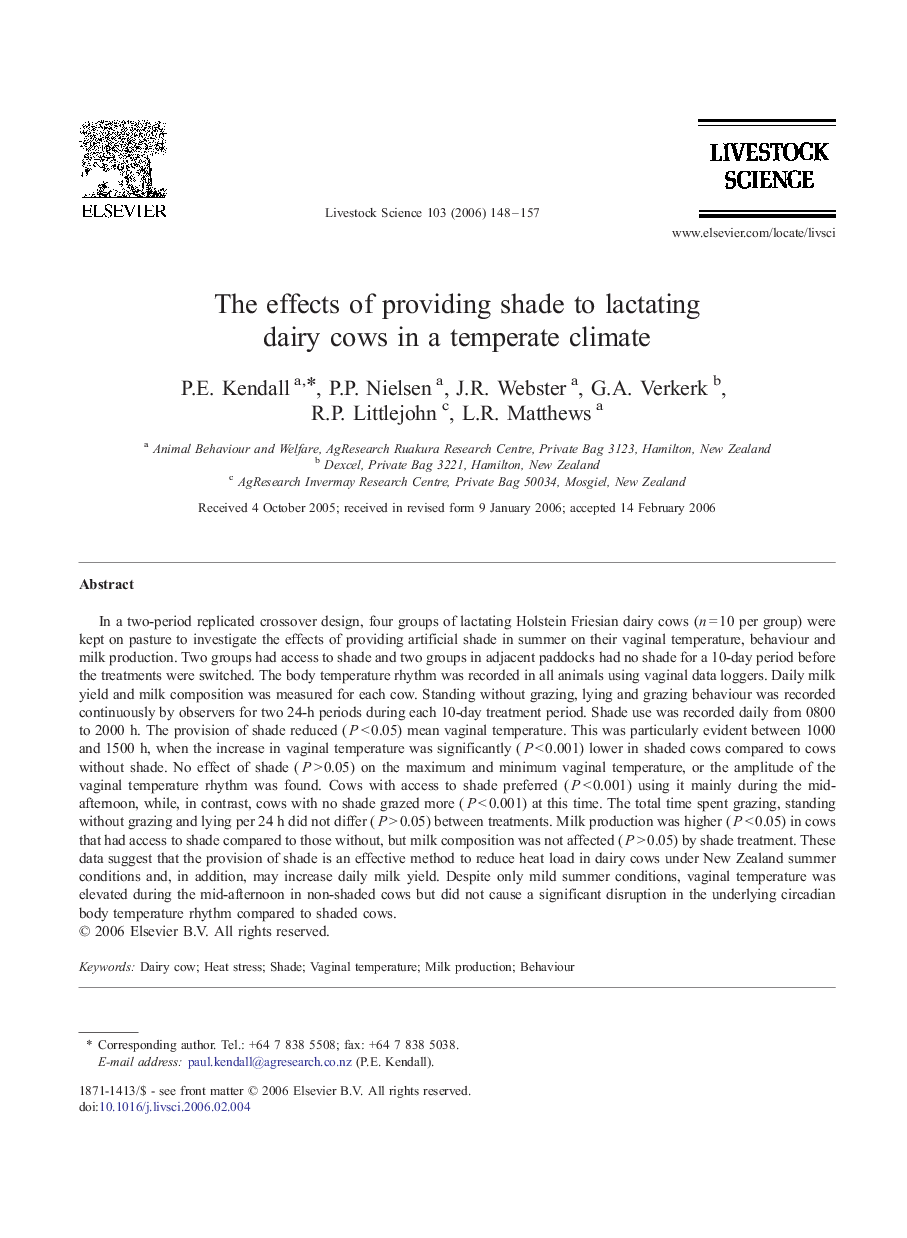| Article ID | Journal | Published Year | Pages | File Type |
|---|---|---|---|---|
| 2449220 | Livestock Science | 2006 | 10 Pages |
In a two-period replicated crossover design, four groups of lactating Holstein Friesian dairy cows (n = 10 per group) were kept on pasture to investigate the effects of providing artificial shade in summer on their vaginal temperature, behaviour and milk production. Two groups had access to shade and two groups in adjacent paddocks had no shade for a 10-day period before the treatments were switched. The body temperature rhythm was recorded in all animals using vaginal data loggers. Daily milk yield and milk composition was measured for each cow. Standing without grazing, lying and grazing behaviour was recorded continuously by observers for two 24-h periods during each 10-day treatment period. Shade use was recorded daily from 0800 to 2000 h. The provision of shade reduced (P < 0.05) mean vaginal temperature. This was particularly evident between 1000 and 1500 h, when the increase in vaginal temperature was significantly (P < 0.001) lower in shaded cows compared to cows without shade. No effect of shade (P > 0.05) on the maximum and minimum vaginal temperature, or the amplitude of the vaginal temperature rhythm was found. Cows with access to shade preferred (P < 0.001) using it mainly during the mid-afternoon, while, in contrast, cows with no shade grazed more (P < 0.001) at this time. The total time spent grazing, standing without grazing and lying per 24 h did not differ (P > 0.05) between treatments. Milk production was higher (P < 0.05) in cows that had access to shade compared to those without, but milk composition was not affected (P > 0.05) by shade treatment. These data suggest that the provision of shade is an effective method to reduce heat load in dairy cows under New Zealand summer conditions and, in addition, may increase daily milk yield. Despite only mild summer conditions, vaginal temperature was elevated during the mid-afternoon in non-shaded cows but did not cause a significant disruption in the underlying circadian body temperature rhythm compared to shaded cows.
